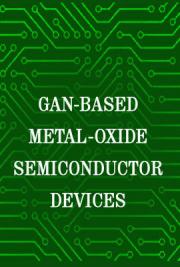GaN-Based Metal-Oxide-Semiconductor Devices
- / Home
- / Technology Books /

Author: Ching-Ting Lee
Downloads: 90
Visits: 1
Pages: 59
Published: 11 years agoRating: Rated: 0 times Rate It
- 1 star
- 2 stars
- 3 stars
- 4 stars
- 5 stars
Book Description
The GaN-based semiconductors are potentially suitable materials for optoelectronic and electronic applications. Among various GaN-based electronic devices investigated, the MOS devices show potentially higher operating frequency, large output power gain, and better thermal stability, in comparison with the well developed Si-based MOS devices. Various deposition methods, which have been used to deposit oxides or insulators on GaN-based semiconductors to fabricate MOS devices, are summarized. The resultant devices demonstrate promising performances. In particular, the newly developed photoelectrochemical (PEC) oxidation method has aroused increasing interests due to its intrinsic advantage in producing high quality oxide/semiconductor interface over the other conventional deposition methods. It is expected that with the progress in dielectric deposition techniques, in combination with improvements in GaN-based materials and device configurations, the GaN-based MOS devices will certainly play an important role in high-frequency and high-power applications such as GaN-based integrated circuits (ICs) and opto-electronic integrated circuits (OEICs) in the future. The processing techniques for Si-based materials and devices are well developed but unfortunately they are not suitable for fabricating LEDs and LDs. On the other hand, the epitaxial techniques for GaN-based semiconductors are still under development and certainly there are still ample rooms for improvements. Someday, the obstacles presently encountered would be overcome and the electrical properties of GaN-based semiconductors are expected to improve tremendously. There is a great expectation in the future to efficiently combine electronic devices with the optoelectronic devices in order to produce the so-called the optoelectronic integrated circuits (OEICs). Therefore, the most important

